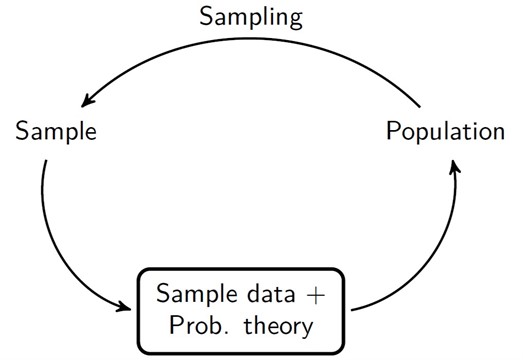The clinical hypothesis is generated from the objective of the research or research question. The statistical hypothesis is generated from the clinical hypothesis.
From the diet study (diet dataset) the researcher’s objective is to reduce weight by applying different types of diet. Secondly, to see which diet performs better in reducing weight?
The clinical hypotheses are,
- The provided diet will reduce a certain amount of weight (let’s say 3 kg).
- Diet 3 is the most effective one in reducing weight.
The statistical hypothesis for (a) is,
Null hypothesis, H_0: d_bar = 0;
Alternative hypothesis, H_1: d_bar != 0 or d_bar > 0;
where d_bar = sum (d_i) and d_i = w_1i (weight before) – w_2i (weight after).
This is to keep in mind that we make decisions on the null hypothesis only. That is, we either reject or do not reject the null hypothesis. If the null hypothesis is rejected, then we conclude the result is statistically significant.
The test can be one- or two-sided based on the way we express the alternative hypothesis. The first expression in the alternative is two-sided and the second one is the one-sided test. When we are testing the hypothesis that means we are assessing if the results obtained from the sample data are true for the population as well.

To make the scientific decision about the effectiveness of the diet we need to consider both clinical and statistical hypothesis and their significance. The clinical significance tells us if the intervention worked in reducing an average of 3 kg weight and statistical significance tells us if this 3 kg weight reduction is true for the population as well. That means if the same intervention is applied to other people it will reduce the same amount of weight.



Leave A Comment